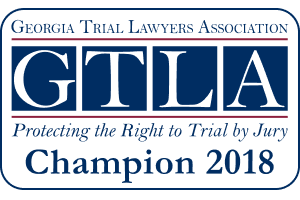Head-on Collision Accidents
Head-on collision accidents are among the most violent and deadly highway crashes seen in the practice of an Atlanta personal injury and wrongful death lawyer. Head-on crashes often result in severe injuries or fatalities. These accidents occur when the front ends of two vehicles collide, typically in opposite directions. The impact can be catastrophic due to the combined speed of both vehicles, leading to devastating kinetic force being exerted on the occupants.
Attorneys at Johnson & Ward have successfully represented victims in numerous head-on collisions involving car-car and car-truck crashes. With that experience, we recognize the complexities and challenges that arise from these incidents, and we are dedicated to helping victims navigate their recovery and seek justice.
Common causes of head-on collisions include:
Distracted Driving. Drivers who engage in activities such as texting, eating, or using their phones can easily lose focus on the road, leading to dangerous situations.
Driving Under the Influence. Alcohol and drugs impair judgment and reaction times, increasing the likelihood of a head-on collision. For example, we represented surviving family members in a case in which a driver drank way too much celebrating passage of her real estate licensing exam, entered an exit ramp on an expressway, and drove several miles northbound in the southbound lanes. She collided head-on with a young man on his way to go bowling with friends, killing him instantly.
Police are pretty good at knowing when to require breath and blood tests for alcohol intoxication, but may not be as prepared to know when to require testing for edible cannabis products and other drugs that do not have readily recognizable odors, etc.
Speeding. Excessive speed reduces a driver’s ability to react to sudden obstacles, making head-on collisions more probable. We obtained the highest jury verdict on record in one rural Georgia county where a truck driver did not slow down behind a car slowing to turn at an intersection, crossed the center line, and collided head-on with an approaching pickup truck.
Fatigue. Drowsy driving is a serious issue that can lead to loss of control and veering into oncoming traffic. It is often difficult to prove that fatigue led to a crash, but in interstate trucking crash cases we often have used driver logs, cell phone records, etc. to prove that a truck driver was over the legal hours of operation and fatigued.
Poor Weather Conditions. Rain, snow, and fog can obscure visibility and affect vehicle control, increasing the risk of accidents. We have handled many cases in which interstate truckers continued driving at the speed limit in snow and ice conditions in which the rules required them to slow down or pull off the road.
Road Conditions. Potholes, debris, and poorly marked lanes can cause drivers to stray into oncoming traffic. While Georgia law allows suits against the state, county or municipality for road conditions only in very limited circumstances, we have had success in suits against road contractors.
Wrong way head-on collisions on freeways get a lot of attention when they happen. However, 83% of head-on crashes occur on two lane roads, usually due to improper passing or veering into the opposite lane on a two lane highway due to speed, fatigue, intoxication or distraction.
Survivability of head-on collision accidents is better in cars with improved structural design. This includes crumple zones to absorb impact, seat belts and air bags, which often make the difference between life and death in head-on crashes. Automobile manufacturers have improved upon the minimum federal safety requirements which have required dual front airbags in passenger cars since 1998 and light pickups since 1999. New safety features include driver knee airbags, side airbags for head and torso protection, curtain airbags for the side windows, and pillar airbags, none of which are yet required.
Offset head-on collisions, are among the most deadly car crashes. This happens when 25 percent or less of the front of the car collides with either another vehicle or a hard, stationary object, can be even worse. In the offset head-on crash, the car doesn’t come to a full stop immediately after the collision. It pulls to the side and continues slightly ahead and may pivot or spin around. In full frontal collisions, the vehicle’s structure and crumple zone absorb much of the kinetic energy. In an offset head-on collision, the impact can miss frame rails and leave only a fraction of the crumple zone available to absorb the impact. When that happens, deceleration time decreases in milliseconds which can make the crucial difference between life and death.
Also, in an offset head-on collision, there is usually an almost instantaneous rotation after contact, throwing vehicle occupants rapidly to the side as well as forward. In such rotations, vehicle occupants may either miss or bounce off the front airbags and hit the center console, the “A” or “B” pillars, doors, or windows. Even if the victim survives the immediate impact, they may later die or suffer permanent impairment due to brain, spine or internal organ injuries from striking surfaces within the vehicle. Having one’s body slammed against a hard surface can cause internal organ damage and internal bleeding that leads to death or disability. Rotational trauma can cause neurological damage to soft brain tissue even without impact against a hard surface.
As with many car crash cases involving serious injury or wrongful death, the greatest challenge is often in finding enough insurance and assets to fully compensate the client for the losses and harms that have been suffered. Experience in insurance law and practice provides a valuable background. By “thinking outside the box,” we often have been successful in recovering several times more money than was available in the obvious sources of insurance.
We offer free consultation*. Call us today at 404-253-7862 or fill out our online form. We can help.












